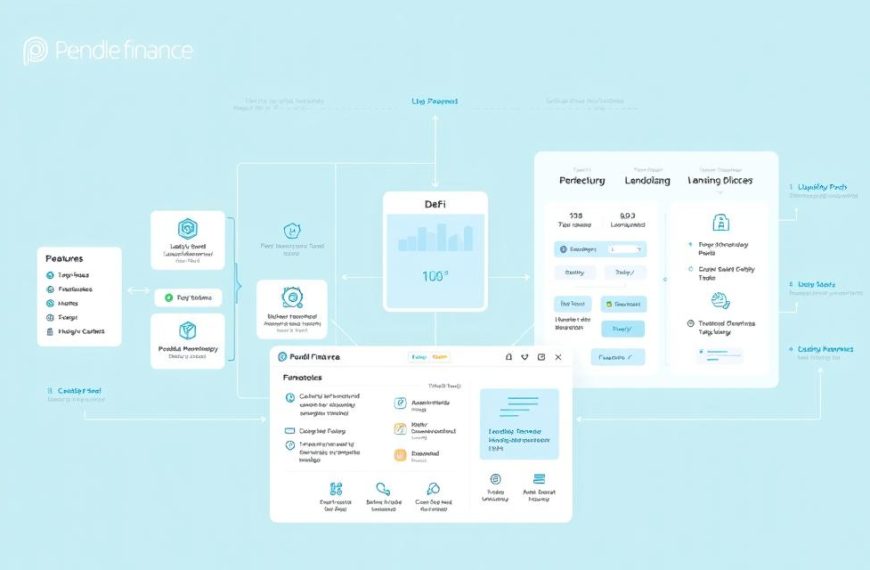Navigating cryptocurrency markets needs smart strategies. Crypto swing trading is a middle ground. It’s not as fast as day trading or as slow as long-term holding.
This method looks for price changes over days or weeks. It lets traders make money without watching the market all day.
The goal is to spot and use market patterns. Successful traders stick to proven strategies instead of guessing.
Medium-term trading helps investors make steady profits with less time. It’s a smart way to make money in the market, rewarding those who do their homework and wait patiently.
By following a plan, traders can turn market ups and downs into gains. This guide will show you how to do it.
Understanding Swing Trading in Cryptocurrency Markets
Swing trading is a middle ground in cryptocurrency trading. It balances quick day trading and long-term holding strategies. This method captures price movements over days or weeks, fitting well with digital asset markets.
What is Swing Trading?
Swing trading involves holding cryptocurrency for a few days to weeks. Traders aim to profit from price swings within market trends. Unlike day traders, swing traders keep their positions for longer.
This strategy is between day trading’s quick pace and long-term holding. Swing traders use technical analysis to spot entry and exit points. They look for price movements in established trends.
The goal is to catch most of a price move, up or down. This doesn’t mean trying to predict market tops or bottoms. It requires watching market conditions but doesn’t need constant screen watching.
Benefits of Swing Trading Crypto
The cryptocurrency market’s volatility offers great chances for swing traders. This strategy has many advantages of swing trading that attract many traders.
One key trading benefit is less time commitment than day trading. Swing trading doesn’t need constant chart watching, fitting those with other commitments.
Large price swings in cryptocurrency markets offer big profit chances. Swing traders can benefit from these swings without the stress of quick decisions.
This method also allows for deeper analysis and planning. Traders have time to research and validate strategies between trades. This leads to better decision-making and risk management.
For newcomers to active trading, swing trading is a great start. It offers practical experience in market analysis and position management without the high pressure of ultra-short-term trading.
How to Swing Trade Crypto: Core Principles
Swing trading in crypto markets needs a solid grasp of key concepts. These principles are the backbone of any good strategy. They help traders deal with the ups and downs of the market with more confidence.
Identifying Market Trends
Swing trading starts with knowing the market’s direction. It’s important to figure out if the market is going up, down, or staying the same. This first step makes sure your trades go with the market flow, not against it.
Moving averages are great for spotting trends. The 50-day and 200-day averages help see long-term trends. Prices above these averages mean the market is likely bullish. Prices below suggest bearish trends.
Other tools like trend lines and volume analysis add to moving averages. Using several tools together helps confirm trend directions. This approach cuts down on false signals and makes decisions clearer.
Setting Realistic Profit Targets
Setting clear exit points is key for professional traders. Profit targets should come from technical analysis, not emotions. Tools like support and resistance levels or Fibonacci retracement are useful.
Successful swing traders often aim for a 2:1 or 3:1 risk-reward ratio. This means your profit should be two or three times your loss. Such ratios help keep profits high even with some losses.
Understanding market volatility is also part of setting realistic targets. Cryptos can move quickly, so targets need to be realistic and account for this volatility.
Managing Positions with Stop-Loss Orders
Stop-loss orders are vital for keeping your capital safe. They automatically close trades when prices hit certain levels, avoiding emotional decisions in downturns. Every trade should have a stop-loss from the start.
Placing stop-loss orders well is about technical analysis, not random percentages. Many place them just below support levels for long positions or above resistance for shorts. This method lets normal market moves happen while protecting against big losses.
Good stop-loss management is at the heart of risk management. By setting your maximum loss before trading, you control your portfolio’s risk. This discipline stops small losses from turning into big ones.
Essential Technical Analysis Tools for Crypto Swing Trading
Learning technical analysis is key for crypto swing trading success. It helps traders spot patterns and signals in price changes. This gives them valuable insights for making smart decisions. The right tools can greatly improve your ability to find profitable chances in the crypto markets.
Moving Averages and Their Applications
Moving averages are basic tools in crypto trading strategies. They smooth out price data into a single line. This makes it easier to see trend directions. The 50-day and 200-day moving averages are most used.
A golden cross happens when the short-term average goes above the long-term one. This is a sign of good times ahead. On the other hand, a death cross means prices might fall.
Many traders use moving averages as support and resistance levels. Prices often bounce off these lines. This creates chances to buy or sell. Moving averages are simple yet very useful for crypto analysis.
Relative Strength Index (RSI) for Overbought/Oversold Conditions
The RSI indicator shows how fast and how much price changes. It moves between zero and 100. It helps find when prices are too high or too low.
Traders look for RSI divergences to spot trend changes. These divergences show when a trend might reverse. The RSI helps confirm other signals.
In strong trends, the RSI can stay in extreme levels for a long time. So, using it with other methods is key for a good market view.
Chart Patterns: Triangles, Flags, and Head and Shoulders
Chart patterns are like a language for technical analysis. They show market psychology and future price moves. These patterns help traders predict breakouts and breakdowns.
Triangle patterns form when price lines converge. Ascending triangles suggest a bullish breakout. Descending triangles often mean prices will fall. Symmetrical triangles show a pause before big moves.
Flag patterns are short pauses in strong trends. They suggest the trend will continue after a brief stop. Spotting flags early can lead to good entry points.
The head and shoulders pattern is a reliable sign of a trend change. It has three peaks, with the middle one the highest. This pattern is key for swing trading decisions.
Getting good at these patterns takes practice but is worth it. Using them with other tools improves trading success and profits.
Developing a Swing Trading Strategy for Cryptocurrencies
Creating a solid swing trading plan is key to success. It helps you make smart choices, avoid emotional decisions, and find profitable trades in the crypto market.
This guide will show you how to develop trading strategy steps. We’ll also talk about common mistakes to avoid.
Step 1: Market Selection and Coin Analysis
Choosing which cryptocurrencies to trade is your first step. Pick coins with enough liquidity and volume for smooth trades. Big coins like Bitcoin and Ethereum are usually safer for swing strategies.
Good coin analysis looks at more than just charts. Consider these factors:
- Market capitalisation: Bigger coins are often less volatile
- Trading volume: More volume means better price discovery
- Project fundamentals: Look at development, team, and real-world use
- Market sentiment: Check social media and community buzz
This deep dive helps you spot real opportunities and avoid scams.
Step 2: Entry and Exit Criteria
Clear rules for when to enter and exit trades are essential. Set technical conditions for starting trades. These might include:
- Price bouncing from support levels
- Multiple indicators showing a buy signal
- Volume confirming price moves
Define your entry exit points carefully. Set profit targets and stop-loss levels to manage risk. This keeps you calm during market ups and downs.
Step 3: Backtesting Your Strategy
Test your strategy with backtesting strategy before real money. This uses historical data to check performance. Good backtesting shows:
- How well your strategy works in different markets
- The best position sizes for managing risk
- Any flaws in your entry/exit rules
Many tools let you backtest without risking money. Remember, past success doesn’t mean future wins, but it’s a good start.
Common Mistakes to Avoid
Even the best strategies can fail if you make these trading mistakes:
- Chasing pumps: Buying after prices jump often means buying high
- Ignoring stop-losses: Staying in trades too long can lead to big losses
- Overtrading: Trading too much can cost you money and stress
- Strategy hopping: Switching strategies too fast without checking them
These mistakes often come from emotions, not logic. Staying disciplined is key. For more on staying disciplined, check out these key strategies for swing trading cryptocurrencies.
Swing trading needs patience, discipline, and always improving your strategy. By following this guide, you’ll build a strong plan that adapts to market changes and keeps your money safe.
Risk Management Techniques in Crypto Swing Trading
Swing trading success goes beyond just knowing the market. It’s about managing risks well. Without good risk management, even the best plans can fail when markets get volatile.
Strong risk management crypto plans keep your money safe in sudden market shifts. They help you survive losing streaks and make the most of winning trades.
Position Sizing and Leverage Considerations
Good position sizing is key to keeping your capital safe. Most pros risk only 1-2% of their total on any trade. This stops big losses from hurting your whole portfolio.
Work out your position size with your stop-loss and account balance. For example, with a £10,000 account risking 2%, you risk £200. If your stop-loss is 5% below your entry, your position size is £4,000 (£200 ÷ 0.05).
Leverage trading needs careful handling in crypto markets. It can increase gains but also losses. Many have lost money despite being right about the market direction.
Here are some leverage tips:
- Start with no leverage until you’re consistently making money
- Use minimal leverage (2-3x max) if you’re experienced
- Avoid leverage during high volatility
- Reduce your position size when using leverage
Diversification Across Crypto Assets
Spreading your investments across different crypto sectors is smart. It reduces risk tied to one asset. Instead of focusing on one, diversify your portfolio.
A good swing trading portfolio might include:
- Big-name cryptocurrencies (Bitcoin, Ethereum)
- DeFi tokens from various protocols
- Exchange tokens from major platforms
- Infrastructure or Web3 projects
This way, sector-specific news won’t hurt your whole portfolio. Different cryptos often move differently, providing natural protection.
Good diversification doesn’t mean trading many assets at once. Stick to 3-5 quality setups across different sectors that you can manage well.
Emotional Discipline and Psychological Aspects
The mental side of trading is often harder than the technical. Trading psychology is what sets pros apart from amateurs. Common pitfalls include fear, greed, and FOMO.
Build emotional discipline with these steps:
- Always follow your trading plan
- Keep a trading journal to review your decisions
- Take breaks after big wins or losses
- Have clear rules for entering and exiting trades
Remember, losses are part of trading. The goal is to manage them well. Emotional trading can lead to revenge trading or abandoning strategies during tough times.
Jesse Livermore once said:
There’s nothing new in Wall Street. Speculation is as old as the hills. Whatever happens in the stock market today has happened before and will happen again.
This wisdom is true for crypto markets too. Keeping your emotions in check during ups and downs helps you stick to your strategy when it counts.
Executing Trades and Monitoring Your Portfolio
To succeed in swing trading, focus on how you execute trades and manage your portfolio. The right tools and platforms are key to turning theory into profit.
Choosing a Reliable Crypto Exchange
Finding the right platform is vital for swing trading success. The best crypto exchange should have strong security, enough liquidity, and fair fees.
When picking a platform, consider these:
- Security measures and insurance
- Trading pairs for your strategy
- Order types like stop-loss and take-profit
- Withdrawal limits and times
- How fast and helpful customer support is
Exchanges like Binance, Kraken, and Bybit are great for swing traders. They offer different benefits in market access, trading tools, and fees.
| Exchange | Trading Fees | Security Features | Order Types |
|---|---|---|---|
| Binance | 0.1% spot trading | SAFU fund, 2FA | Stop-limit, OCO |
| Kraken | 0.16% maker | Cold storage, audits | Stop-loss, take-profit |
| Bybit | 0.1% maker | Multi-sig, withdrawal whitelist | Conditional orders |
Using Trading Bots and Automation Tools
Automation boosts your ability to execute crypto trades well. Trading bots work all day, following your strategy without emotions.
These automation tools handle many tasks:
- Setting entry and exit orders with technical indicators
- Rebalancing your portfolio based on risk
- Trading at all hours
- Tracking and reporting performance
Platforms like 3Commas and Cryptohopper make it easy to set up bots. Always test them with small amounts first.
Even with bots, keep an eye on your crypto portfolio. Tools like CoinStats and TradingView help track performance across exchanges.
Remember, bots need regular checks. Markets change, and bots might need tweaks to stay effective.
Conclusion
Crypto swing trading is a smart way to make money from market ups and downs without the stress of day trading. This guide shows how using technical analysis and careful risk management can lead to steady profits in crypto.
To make money trading, it’s not just about knowing what to do. You also need to control your emotions, keep learning, and stick to your plan. Always remember, keeping your money safe is more important than trying to make a lot of it.
We suggest starting small and growing your trades as you get better. The crypto markets are full of chances for those who are patient and disciplined. Start your journey to becoming a skilled swing trader by following these tips every day.


















